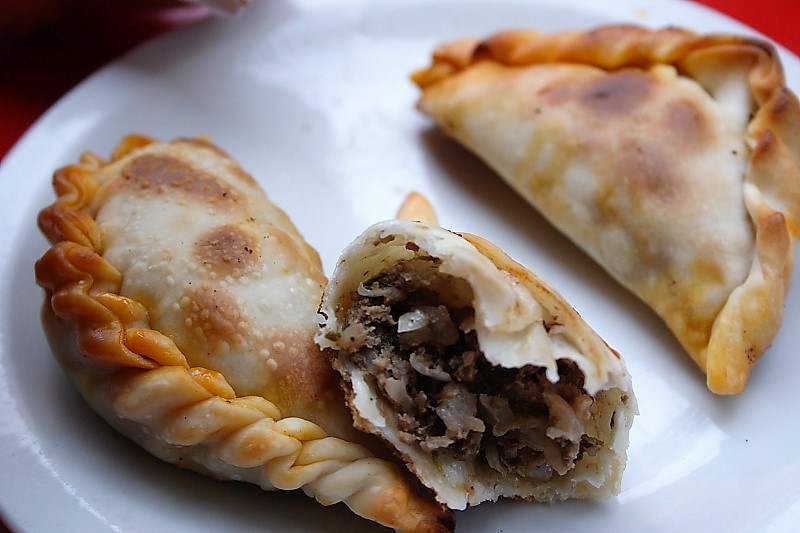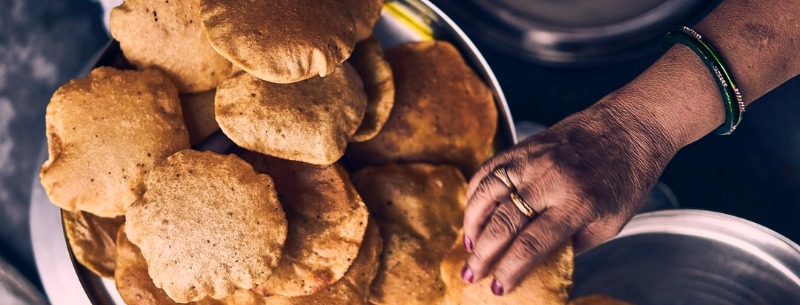What to Eat in Buenos Aires Argentina
Argentina‘s reputation as a meat-lover’s paradise is well-deserved: its inhabitants have perfected the art of barbecue — slow-cooked on an outdoor grill, accompanied by the beverage of your choice — it’s a wonderful thing. But it isn’t just about meat; the Argentinean table offers more than just carne — though vegetables are noticeably lacking from the equation.
Medialunas
The traditional Argentine breakfast is cafe con leche con medialunas — white coffee and croissants. Of course you can substitute your cafe con leche for something else: an espresso, tea, hot chocolate… But you can’t miss out on the medialunas. Smaller than French-style croissants, they come in a range of varieties: dulce (sweet), salado (savory) or filled with dulce de leche (a milky caramel spread that’s incredibly popular).

You might even find them filled with ham and cheese, but that’s more of a mid-afternoon snack than a breakfast. Buy a dozen from a bakery or get two or three with your coffee in a nice cafe — well, any cafe really, you’ll find medialunas everywhere.
Empanadas
Cheap, filling and ubiquitous, an empanada or two makes a great snack or light lunch. Traditionally filled with minced meat, you’ll also find empanadas stuffed with chicken, or with ham and cheese. Some shops offer more flavors but Argentineans are traditional: they like to stick to the tried and true.

If you’re keen to try cooking them for yourself, you can buy ready-made circles of empanada pastry at the supermarket. All you have to do is prepare the filling, fill them and bake them in the oven. Closing the empanadas takes a bit of practice, though!
Sandwich de miga
Most cafes serve sandwiches de miga, either plain or toasted (in which case they’re simply called tostados), and they make a great mid-afternoon snack if you’ve overindulged in empanadas — a very real problem that most visitors to Argentina will suffer at some point in their trip. Sandwiches de miga are made from very thin slices of crustless white bread, and are almost always filled with ham and cheese. You can find variations, including triples (with three slices of bread instead of two) or extra ingredients like tomato or lettuce; but if you see tostados on a menu, you can safely bet they’ll be ham and cheese.
Asado
You really can’t miss a traditional Argentinean asado (barbecue). The best way is to get yourself invited over to a local’s place for dinner, but if that isn’t possible there are hundreds of eateries vying for your custom; from roadside stalls with broken plastic tables to upmarket restaurants.

Wherever you eat asado, the cooking technique will be similar. A fire is lit in a parrilla and allowed to die down to embers. The meat is placed on a grill over the embers and then slow-cooked to perfection. What might not be so much to your taste is the kind of meat on offer. In addition to steak and sausages, you’ll also be offered chinchulines (intestines), morcilla (blood sausage) and mollejas (glands) among other things. Some of them are surprisingly tasty — others, not so much. But all worth a try.
Mate
Argentina’s hot beverage of choice is mate, a tea-like drink prepared from yerba mate and drunk through a straw from a small round cup. It’s a social event more than just a drink, and comes with its own set of customs and traditions. If you really want to look Argentinean, get yourself a mate cup and bombilla straw, tuck a thermos flask under your arm and you’re ready to go.
Fernet
Although it’s originally from Italy and so not technically Argentinean, Fernet is widely drunk in Argentina. It’s a dark brown spirit that is usually drunk with Coke, making the soft drink fizz up and giving it a Guinness-like appearance. The flavor, though, is as far removed from Guinness as you can imagine –it has a bitter tang that takes a bit of getting used to. Fernet and Coke will be available in most restaurants, but it’s best drunk at home with friends — preferably while waiting for your aside to cook.
Wine
Argentina’s many wine regions produce a variety of varieties, but red is definitely more common than white — perhaps because it complements the country’s delicious meat so well. Although famous for Malbec (a delicious, dry red), you’ll also find a lot of Shiraz and Cabernet Sauvignon on offer — try a few to discover which is most to your taste. Many wineries have tasting rooms where you can try their wares, usually for a small fee.
Although meat is certainly the focus of Argentinean cuisine, there’s a lot more on the menu that’s worth a try.
